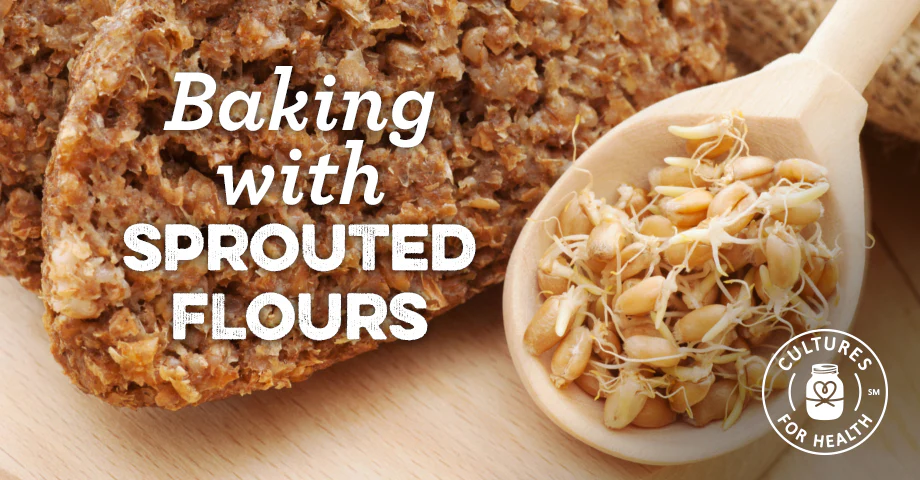
We are pleased to welcome this article from Peggy Sutton, owner of To Your Health Sprouted Flour Company
There’s been lots of publicity lately about the “everything sprouted” movement catching on across the country. The Associated Press recently released such an article that was published by many newspapers along with localized photos. (I received lots of clips from customers.) I think it’s great! Baking with sprouted flours and consuming sprouted beans and legumes is not a new fad and is not just left over from the 50s and 60s. It’s a time-honored tradition that goes back to biblical days. Urbanization brought about the need to quickly gather large amounts of food for transport and storage which, with the invention of the combine, saw natural germination of grain crops fall by the wayside.
NUTRIENT CONTENT OF SPROUTED GRAINS AND FLOURS
When grains are sprouted they are converted from seeds into living plants with more vital nutrients which are more readily absorbed by the body. Sprouted flours are digested by the body more like a vegetable than a starch because the process breaks down the grains’ starches into simple sugars that are very easily digested. There have been studies on the increases of specific nutrients in sprouted grains, especially wheat. I have found from the testing of our sprouted wheat flour that if a nutrient isn’t available in the raw grain, it won’t be in the sprouted grain either. So if a study claims that the vitamin C in a raw grain can increase by 300% during sprouting that’s great if the raw grain contains vitamin C to begin with. This is a testament to the poor soil conditions we have around the country today, even for organically grown grains which are what we sprout.
EFFECTS OF BAKING ON SPROUTED FLOUR
I have been asked countless times about the destruction of the enzymes produced in sprouting when baking breads at high temperatures. My response to this question is two-fold: since sprouted flour is much easier to digest for other reasons than the enzymes produced, it’s not much of an issue; and because bread baked even at 450 degrees is done when the center reaches 200-205 degrees, there really isn’t much compromise there either. Also, sprouted flour does NOT have to be soaked so you don’t have to plan ahead for all your baking anymore. Bake like a pro and enjoy your sprouted bread with lots of butter!
ADJUSTMENTS FOR BAKING WITH SPROUTED FLOUR
The biggest baking tip I have to offer for substituting sprouted flour for unsprouted or processed flour is that sometimes you will have to increase the amount of liquid called for in a recipe. I find this is the case most of the time when baking yeasted breads; hardly ever with cakes, cookies, and muffins. My recommendation is that you start by adding 2-3 tablespoons and increase by 1 tablespoon after that if your dough is still dry. If you’re using a bread machine recipe increase the water called for by ¼ cup for 4-5 cups of flour, 3 tablespoons for less than 4 cups of flour.
USING SPROUTED FLOUR WITH SOURDOUGH
Sprouted flour is also great for making sourdough breads. I like to grow my starter using sprouted rye flour and adding sprouted wheat and spelt flour to my dough. A basic French bread recipe using sprouted wheat flour makes great baguettes, rolls, bread sticks, and buns. Our non-gluten sprouted flours can be used alone or mixed to make wonderful batter breads, cookies, and muffins.
Yes, I’m glad that folks understand the benefits of eating sprouted grains, legumes, and beans. We are so glad to be able to sprout for you and eliminate the time-consuming process of doing it at home. Happy baking to you!
GET STARTED WITH THESE SPROUTED BREAD RECIPES
About the Author: Peggy Sutton is the owner of To Your Health Sprouted Flour Co. in Fitzpatrick, Alabama.














